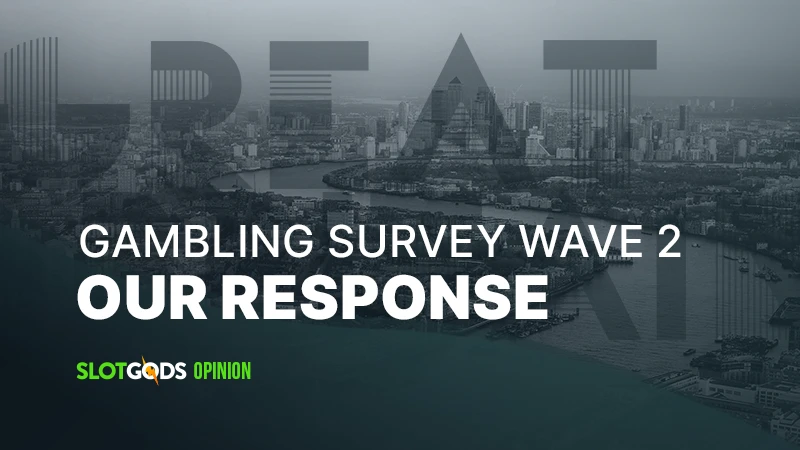Gambling Survey for Great Britain Wave 2 results - our response

The first wave of results from the much-anticipated Gambling Survey for Great Britain was released back in February, shedding light on trends amongst British gamblers. The second wave has now been published.
Gambling Survey for Great Britain (GSGB) background
The GSGB is intended to provide the most comprehensive dataset of its kind, revealing industry trends and player behaviours, thus helping to ultimately inform legislative decision making.
Stakes are high, as the UK Gambling Commission (UKGC) has invested a great deal in the survey, and placed significant emphasis on the quality of the data.
The survey’s methodology has been hailed for its design, which should produce high quality data from which important inferences can be drawn.
Wave 2 at a glance
The Wave 2 data was collected between November 2023 and February 2024 by NatCen, who interviewed a “nationally representative” sample of 5,003 British adults. Here are the key takeaways from Wave 2:
- 48% of UK adults participated in some form of gambling activity in the four weeks prior to being interviewed
- In this same period, 21% of those interviewed had only participated in lottery gambling
- Gambling participation was highest amongst males aged 35-64, however, when removing lottery players from the data, this age range drops to 18-44
- Only 14% of participants had engaged in non-lottery online gambling, and 18% took part in non-lottery in-person gambling
- The most popular gambling activity remains lotteries, followed by scratch cards (13%), betting (9%) and playing instant win games (6%)
Wave 1 vs. Wave 2 comparison
Whereas Wave 1 utilised data collected between July and November 2023, Wave 2’s data reflects trends from late 2023 to early 2024.
The gross participation of UK adults in gambling activities (48%) remained unchanged from Wave 1. Also, in terms of the popularity of specific gambling activities, players’ behaviours seem largely unchanged.
Respondents’ mental wellbeing score (using SWEMWBS) rose from 22.8 to 22.9, although this is a fairly insignificant shift. For comparison SWEMWBS has a mean score of 23.5 and a standard deviation of 3.9 in UK general population samples. In summary this, essentially, means that based on the sample interviewed for GSGB Wave 2 the respondents' level of mental wellbeing is comparable with the wider population.
Participants were also asked about why they gambled. Helen Bryce, the UKGC’s Head of Statistics, stated that the results of both waves show “that most people take part for fun or for the chance to win money".
The number of those who took part in online gambling, however, seems to have dropped. In Wave 1, 16% of participants had engaged in non-lottery online gambling, and this figure has dropped to 14% for Wave 2.
Whilst Waves 1 and 2 can be compared, it’s important to note that, because of varying methodologies, the results are not necessarily comparable to those of all previous datasets.
Warning against comparing GSGB results with those of previous studies, the UKGC said, “the GSGB is not directly comparable with results from previous surveys and direct comparisons should not be used to assess trends over time”. But they are worth comparing, of course!
Implications
Generally, there have been few changes between Waves 1 and 2, and the majority of data is consistent. This suggests that the industry is in a stable state, and solidifies some of the inferences drawn from the previous Wave.
The fact that the proportion of participants that engaged in online non-lottery gambling decreased by 2% is unlikely to be cause for alarm. This may reflect the Christmas holiday season and a decrease in players’ bankrolls. Unfortunately, we cannot compare this data to that of previous years, due to methodological changes.
One notable omission is any mention of problem gambling. The UKGC has described its intention to assess gambling-related harm through the GSGB, but this data seems to be absent from the published summaries of both Waves. Considering that problem gambling is the area that would, arguably, interest the most (or certainly a significant number of) people digesting the data it seems a curious omission.
As with Wave 1, Wave 2 confirms that a huge proportion of gamblers only engage with lotteries. This may have implications for the question of whether or not individuals consider playing the lottery to be ‘real gambling’.
More and more, it looks as though the lottery is broadly considered less taboo than other forms of gambling. In light of these GSGB stats, the UKGC should address the leniency with which they handle the National Lottery, and take a more balanced approach.
This is the second time that the UKGC has stated that data is not necessarily comparable with that of previous studies. The Commission should take measures to ensure that each Wave of GSGB data can be compared to those that preceded it. Any adjustments to the methodology are likely to diminish the overall value of the data.
Looking ahead
The next wave of data is due to be released on 12 September 2024.
Well-designed studies such as these are essential to informed decision-making. That said, there’s only so much that can be gleaned from them at this early stage.
With each new wave, a great deal more insight will be gained, and it should be fascinating to see where the stats go from here.
